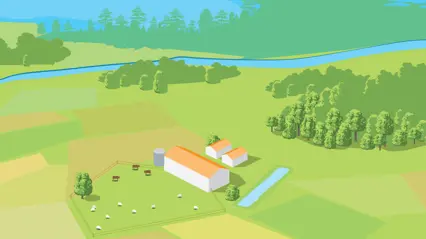
Katarina Kyllmar, coordinator for the Agricultural Landscapes programme
+46 18 672597, katarina.kyllmar@slu.se. Research Group Leader at the Department of Soil and Environment, Agricultural Water Management, SLU.

Anders Glimskär, assisting coordinator for the Agricultural Landscapes programme
+46 18 672220, +46 768219670, anders.glimskar@slu.se. Researcher at the Department of Ecology, SLU.

Selection of environmental analysis data for the environmental objective A varied agricultural landscape
In SLU's environmental data catalogue, you can search and browse open data from our environmental monitoring and assessment.
Recources within Agricultural Landscapes
-
Data host - Agricultural land
We deliver quality-assured data from environmental monitoring commissioned from the by the Environmental Protection Agency. This gives faster and better access to the latest research results. -
Environmental data MVM
Environmental data MVM is a web service for soil, water and environmental data, which is used to make data available from two of SLU's data hosts, Agricultural Land and Lakes and Watercourses. Data comes from studies of crops, soils, pesticides, water chemistry and biology in lakes and streams. The data hosts are mandates from the Swedish Environmental Protection Agency and the Swedish Agency for Marine and Water Management, which means that SLU stores, quality assures and makes available data -
Monitoring nutrient losses from agricultural land
Losses of nitrogen and phosphorus from agricultural land contribute to the eutrophication of lakes and coastal waters. Two sub-programs within the Swedish Environmental Monitoring program provide data to support the evaluation of mitigation programs to reduce nutrient losses.